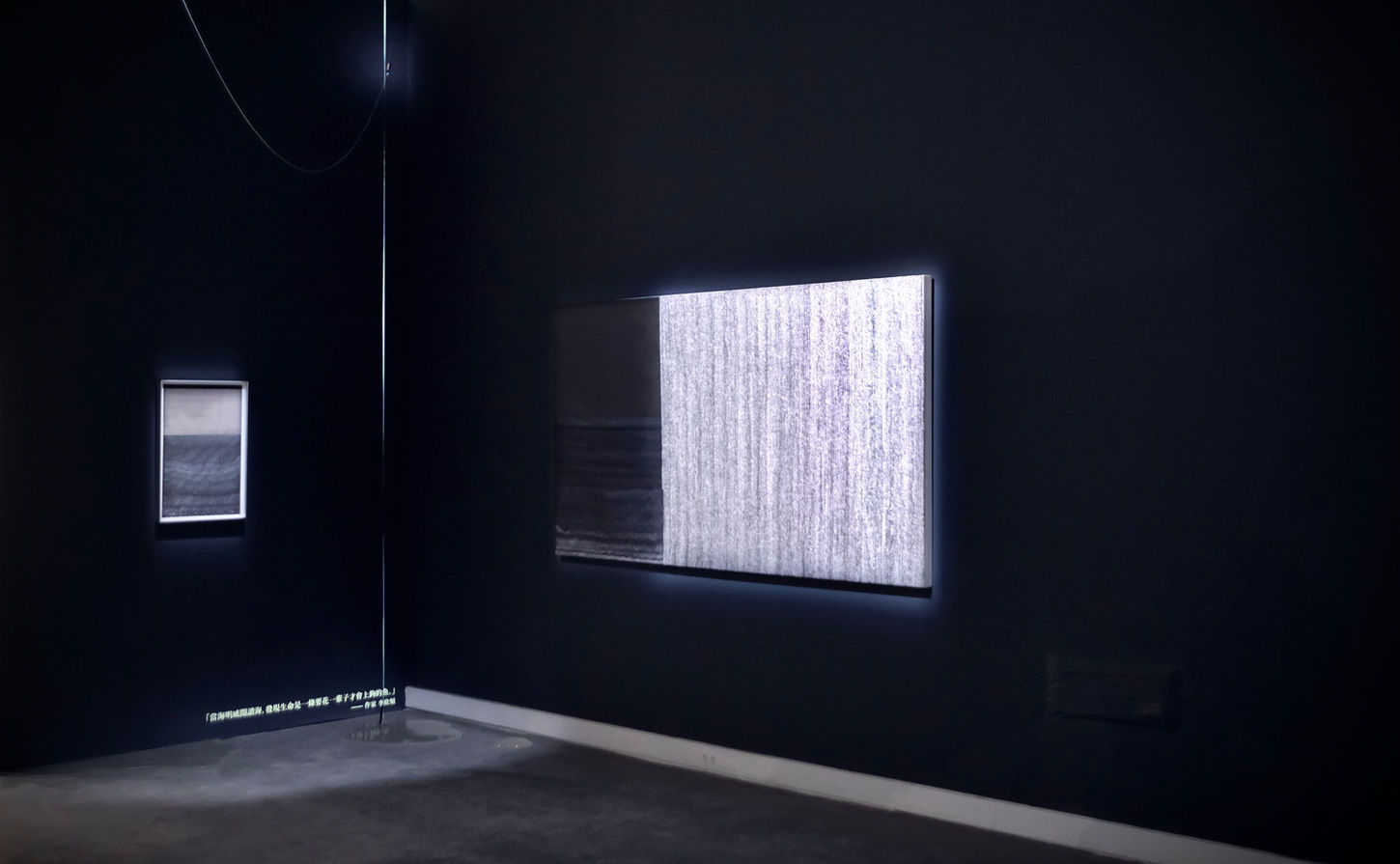The Old Man and the Sea 老人與海
2021 / Kaohsiung Award,Kaohsiung Museum of Fine Arts,Kaohsiung,Taiwan。高雄市立美術館
On soaked watercolor paper, the entire text of The Old Man and the Sea by Ernest Hemingway is transcribed by hand using a black gel pen. The act is performed kneeling on the floor throughout—mirroring the struggle between the old man and the marlin. Through repetitive writing, the mind enters a blank state, immersing itself in the narrative’s atmosphere.
The ink spreads across the saturated surface, allowing lines and smudges to evoke the quiet tension of a man alone at sea, fighting not only nature, but for belief itself. The layered marks suggest a kind of intimate darkness—a solitary resistance beneath moonless waves.
Ballpoint transcription is a familiar act: school notes, arithmetic, memorization. Beyond learning, there’s a belief in accumulation. In East Asian thought, phrases like “grain by grain, a tower rises,” or “in books lie gold and beauty,” reflect a cultural faith in steady effort. Just as the old man wrestles the marlin, we, too, wrestle with belief. And in this repetition, we affirm the value of our struggle.
在浸濕的水彩紙上用黑色中性筆抄寫整本厄尼斯特.海明威(Ernest Hemingway)的《老人與海》《The Old Man and the Sea》。抄寫時全程跪臥地面,與書中老人和馬林魚搏鬥的場景相似,透過抄寫動作讓意識空白,進入文句間的場景。飽含水分的紙張使得原子筆的墨水暈開,透過線條堆疊、暈染,製造畫面中深夜大海孤獨一人為信念奮鬥的幽微感。
我們對原子筆抄寫的行為並不陌生。在學校時寫下的筆記、算數、默寫等,除了學習之外,我們更相信這是一種「累進」。如「積沙成塔」、「書中自有黃金屋,書中自有顏如玉」等觀念,就是受到儒家思想的東方所相信的價值;這就與《老人與海》中老人與巨大的馬林魚搏鬥一樣,其實我們搏鬥的是信念,而這樣的行為是對自我價值的體現。









